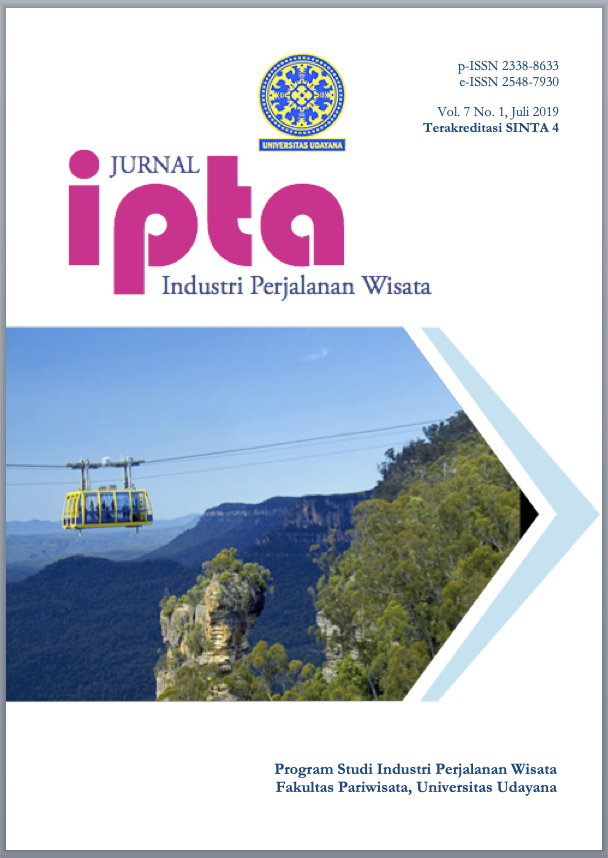PERAN PRAMUWISATA DI KAWASAN KONSERVASI GEOPARK, BATUR KINTAMANI
Abstract
Geopark as a conservation area has a potential for biodiversity, geological diversity, and culture. This diversity of potential is developed as an integral part of the Geotourism area. This research was conducted in the Gunung Batur conservation area and the purpose of this study was to determine the role of guides through the delivery of information provided to tourists to contribute to the protection of the Batur geopark conservation area as sustainable tourism. The role of the guide was identified through the perception of tourists by distributing questionnaires to 100 respondents. The results of the study state that there are two variables, namely the communicator mediator and the Research management role of environmental interpreter in the category "Simply Agree". The sub-indicators of the variable are "Explain potential (geology) as the main potential of the conservation area" with a score of 52.8 percent; "Explain the activities of local communities in the conservation area" with a score of 59.4 percent; "Describe natural resources, vegetation and habitat at the climbing location" with a score of 50 percent. The three sub-indicators are indicators that are the main function of the role of guides in the conservation area, but this sub-indicator gets the lowest percentage, therefore it is interpreted that the role of guides in the Batur Kintamani Geopark conservation area still needs improvement in interpreting information related to socio-cultural potential , as well as geology as a potential for conservation, and natural resources.
Downloads
References
Cohen, E. (1985). The tourist guide: The origins, structure and dynamics of a role. Annals of Tourism Research, 12(1), 5–29.
Min, J. C. H. (2011). A short-form measure for Assessment of emotional intelligence for tour guides: development andevaluation tourism management. Tourism Management, 33(1), 155-167.
Newsome, D., Dowling, R., & Leung, Y-F. (2012). The nature and management of geotourism: A case study of twoestablished iconic geotourism destinations. Tourism Management Perspectives, 2–3, 19–27.
Ormsby, A., & Mannle, K. (2006). Ecotourism benefits and the role of local guides at Masoala National Park,Madagascar. Journal of Sustainable Tourism, 14(3), 271-287.
Paskova, M. (2012). Tourism environmentalism. Czech Journal of Tourism, 1(2), 77-113.
Pereira, E. M., & Mykletun, R. J. (2012). Guides as contributors to sustainable tourism? A case study from theAmazon. Scandinavian Journal of Hospitality and Tourism, 12(1), 74-94.
Pond, K. L. (1993). Interpretation and the role of the guide. The professional guide. dynamics of tour guiding. VanNostrand Reinhold: New York.
Randall, Carleight. (2008). Visitor Perceptions of the role of tour guides in natural areas. Journal of Sustainable Tourism. Vol.17, No. 3, May 2009, 357-374.
Weiler, B., & Walker, K. (2014). Enhancing the visitor experience: Reconceptualising the tour guide‟s communicativerole. Journal of Hospitality and Tourism Management, 21, 90-9





